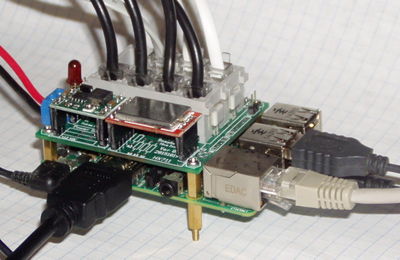Change: Interface PCB
Background
A Printed Circuit Board (PCB) has been designed and manufactured. This is an interim solution - a step towards the goal of a complete turnkey system.
- All sensor plug in.
- 12 VDC power supply with battery voltage monitoring
The goals were to
- make it quicker and easier to build a system and to make it more reliable.
- to establish a relationship with a board house.
- to select an open source pcb layout package and learn how to use it.
- to test the footprint of the RJ connectors and mating with the Pi.
Problems
- ADC is only one channel.
- No Real Time Clock (RTC).
- Board does not meet Pi HAT specification.
- Board is not general purpose but limited to our use.
Proposed change
Split this board in two, Board A and Board B.
- Board A will be a general purpose interface board that meets the Pi HAT specifications and contains:
- at least one 4 channel ADC so each load cell will be individually measured instead of being summed.
- Real Time Clock with battery backup.
- Configuration ROM
- Power supply
- Board B will have all the connectors installed in a bulkhead configuration. It will connect to Board A by directly plugging into a header on Board A or connect via a ribbon cable.
Design Considerations
- Minimum of 8 (4 differential) inputs.
- Must have reliable serial communication to the Pi. Probably should use SPI, I2C bus.
- Consider using 16 bit ADC instead of 24 bit.
- Conversion speed (samples per second).
- Will gain of 64 work? Currently using x128.
- Extra ADC channels.
- Extra GPIO pins.
- Channels individually configurable.
